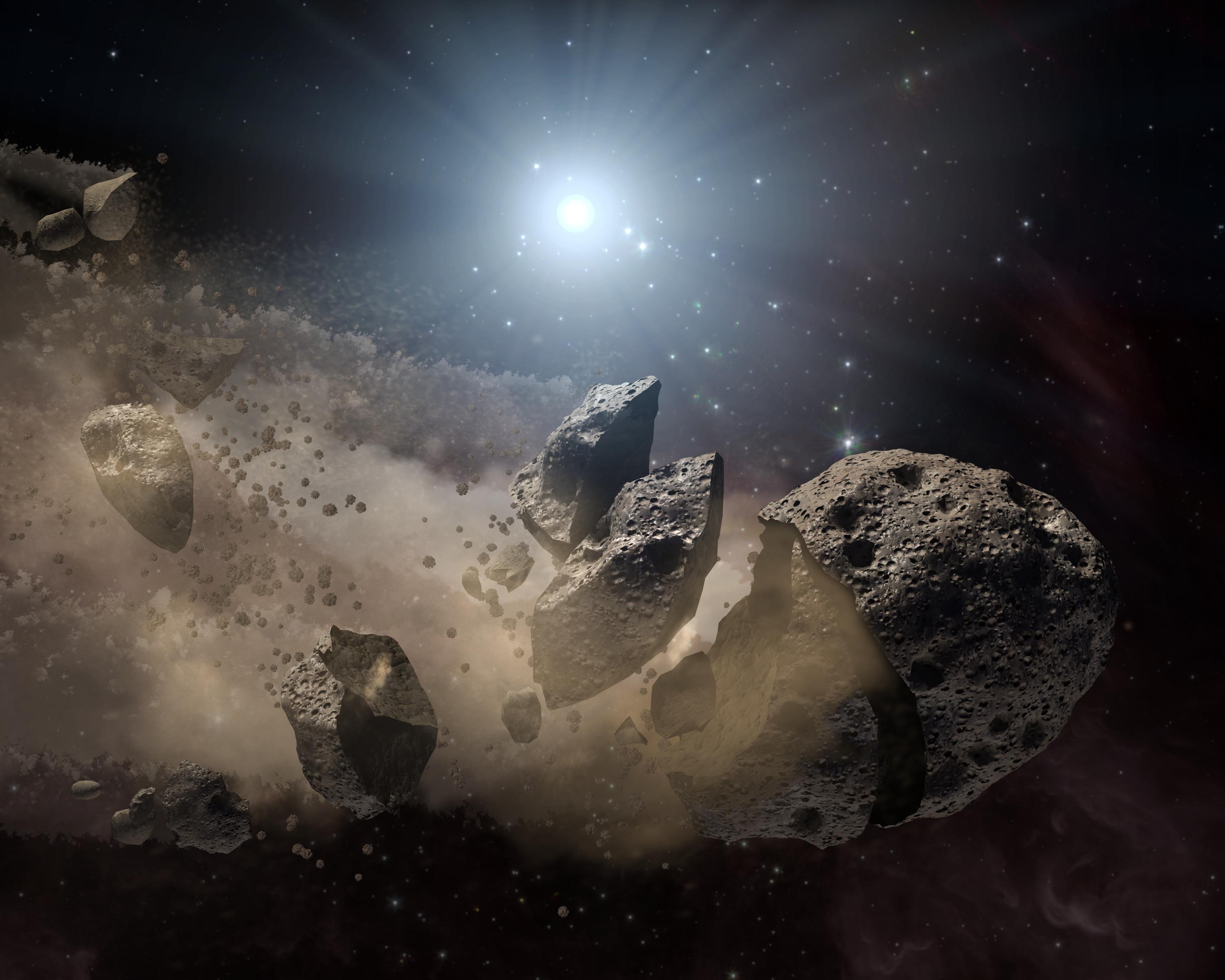Astronomy - Best Space Stories of the Week — Jan. 1, 2016

An artist's illustration of an asteroid breaking apart in space. A new study suggests this might be the fate of the asteroid 3200 Phaethon.
Credit: NASA/JPL-Caltech
Purple rocks on Mars, the sudden loss of a "Star Wars" icon, unexpected orbits from China's satellites and (expected) New Years' comet flybys — it's Space.com's best space stories of the week.
Redhead goes purple
Although Mars looks entirely red from Earth, NASA's Curiosity rover caught a glimpse of purple rocks embedded in the planet's surface. The rocks, near the foot of the Red Planet's 18,000 ft (5.5 km) Mount Sharp, likely contain an iron-oxide mineral called hematite, also found in other Mars rocks. [Full Story: NASA's Curiosity Rover Spots Purple Rocks on Mars]
Loss of a legend
Carrie Fisher, the actress best known as Princess Leia from the "Star Wars" films, passed away the morning of Dec. 27 after suffering a heart attack two days earlier. She most recently reprised her famous role in 2015's "The Force Awakens." [Full Story: Actress Carrie Fisher, 'Star Wars' Icon, Dies at 60]
Out of place
Two commercial Chinese Earth-observation satellites reached a different orbit than intended, looping around Earth lower than expected after their Dec. 28 launch. The two are following an egg-shaped orbit, and would re-enter Earth's atmosphere within months without adjustment. [Full Story: China's New Earth-Observation Satellites in Unexpected Orbits: Report]
See also: China's Lofty Space Ambitions Include 2018 Landing on Moon's Far Side (New White Paper)
Ancient seas
The dwarf planet Ceres holds what seems to be an ocean's worth of ice layering its cold, dark craters — suggesting it could have hosted an ocean billions of years ago. Ceres is the largest body in the solar system's main asteroid belt, and it is about a third the size of Earth's moon. [Full Story: Dwarf Planet Ceres Likely Had Ocean Long Ago]
Slow-motion breakup
A rocky object called 3200 Phaethon, an asteroid with comet-like features, is being slowly shredded to pieces as it orbits hair-raisingly close to the sun. The strange asteroid features a comet-like tail of debris because of its extremely close orbit — it approaches closer to the sun than any other named asteroid, to within half Mercury's orbit, before swinging away again — and its trail of debris sparks the yearly Geminid meteor shower when Earth passes through. [Full Story: Space Shredder: Sun May Be Tearing Asteroids Apart]
Earth-sci panic
Amid rumors and what-if scenarios regarding Earth science's fate in the new US presidential administration, NASA tells researchers to "be a source of signal, not a source of noise." [Full Story: Earth Scientistss Are Freaking Out. NASA Urges Calm.]
Go deep
Astrobiologists are advocating for NASA's 2020s lander on Jupiter's moon Europa to drill into the moon's ice — in order to avoid any contamination caused by thrusters blasting to slow the lander down. The moon's tantalizing water-vapor plumes make the moon one of the solar system's most promising potential sites for extraterrestrial life. [Full Story: NASA's Europa Lander May Drill to Find Pristine Samples on Icy Moon]
Good location
New research suggests that the faint star Proxima Centauri, home to the newly-discovered exoplanet Proxima b, is indeed gravitationally bound to the nearby Alpha Centauri binary system. Researchers have wondered since Proxima Centauri's discovery whether the star orbits the binary system — and if it does, that's a very good sign for the habitability of Proxima b, our nearest exoplanet neighbor. [Full Story: Proxima Centauri's Origins Could Mean Its Exoplanet Really Is Habitable]
New Mars digs
NASA has made progress toward picking the landing site for its Mars 2020 rover, narrowing the choices down from 54 to 8 high-priority sites that could have hosted water (and therefore supported life) in the ancient past. The agency is also considering the best locations for a future human landing site. [Full Story: Where to Land on Mars: NASA Makes Progress in Quest for 2020 Rover Site]
New Years' comets are coming
Comets in the New Year's Eve and early 2017 skies will be a feast for the eyes — if you have a telescope or binoculars handy. Look out for their shining flybys above. [Full Story: 'New Year's Eve Comet' and More: Three Flybys Will Kick Off 2017 New Year]
No comments:
Post a Comment